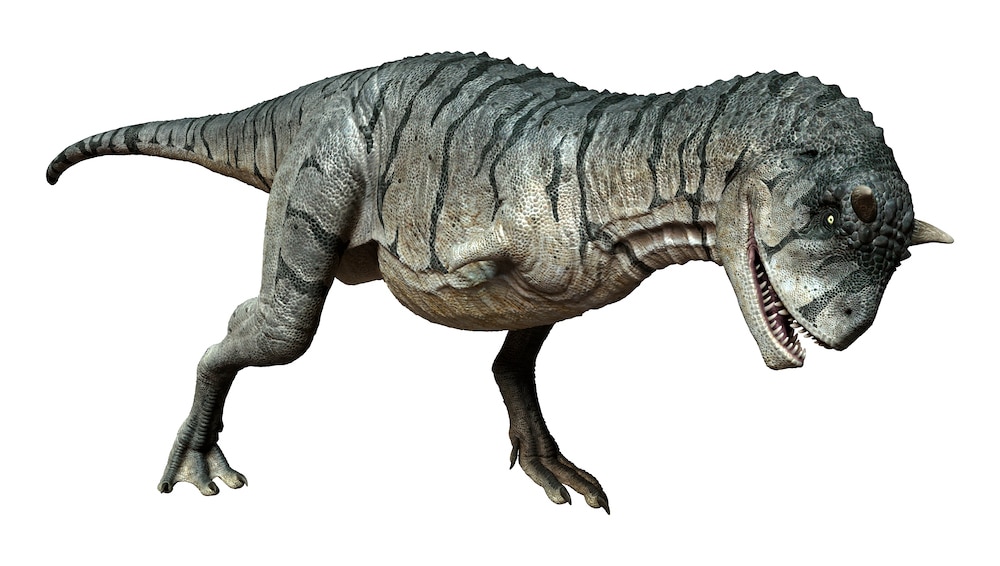Create a free profile to get unlimited access to exclusive videos, sweepstakes, and more!
New (almost) armless dinosaur would have wished for T. rex arms
T. Rex memes are so 70 million years ago.

T. rex might have been memed endlessly for its infamously short arms (which are the ultimate irony for such a vicious dinosaur), but Guemisa is here to take it out of its misery.
Guemisa ochoai is as armless as it gets among dinosaurs. It might have had some sort of vestigial arms, like its albelisaurid relative Carnotaurus sastrei (above), but nothing it could really use. Paleontologists have unearthed only the skull of the creature that lived in what is now Argentina during the Late Cretaceous, but skulls can reveal more than you think. It could even give an idea as to why this part of the world yielded so many bizarre creatures back then.
Somehow, abelisaurids were able to take down even the ginormous Titanosaurs that roamed the Earth without needing arms. Many species whose entire skeletons have been found did have ridiculously short arms. Don’t let that fool you into thinking these theropods were inept hunters. They instead relied on their powerful heads and jaws to take down a Titanosaur, so these apex predators had no problem making it to the top of the food chain even if they did look like a meme.
“The finding of this specimen constitutes the first unequivocal occurrence of an abelisaurid in Northwestern Argentina and brings new evidence concerning the geographic distribution of the clade during Late Cretaceous times in South America,” said the researchers who discovered it in a study recently published in Journal of Vertebrate Paleontology.
But why the lack of arms? Vestigial structures are not necessarily useless. Take T. rex and whatever it had that could just barely pass for arms. It only had two fingers and a vestigial third finger bone (metacarpal) in its hands. It still had monstrous claws it could use to its advantage as meat hooks while it sank its jaws into the neck of an unfortunate sauropod. The vestigial arms of abelisaurids, which are really seen as partly vestigial, were not so useful. Their arms are thought to have probably just hung there and allowed their heads to do all the hunting.
Taking a closer look at the bones of an animal can tell you about its muscular structure. With T. rex, it became apparent that the arms themselves were not vestigial structures — only the metacarpal bones. They were short but substantial enough to grab onto flesh. Abelisaurids had solid upper arm bones, at least for what was left of those arms, but they had much shorter lower arm bones and immobile elbows. Even their fingers were stunted and fused. This could have been caused by dysfunctional genes, but if so, what screwed up the genes is unknown.
What we do know about Guemisa is that it seems to be a new species. That is a real find when most Patagonian abelisaurid fossils are random bones and teeth that often cannot be identified. Its skull shows features shared by all abelisaurid species, which is how it was identified as one.
These include a skull with no projections, though structures on most abelisaurids’ heads made them look something like freakishly huge horned toads with teeth. Its skull also had the thin roof common in abelisaurids. Its small size may or may not mean it was a juvenile.
Who knows what fossils might still be lurking in Patagonia, or what even more unusual creature features are out there.


























